.
#YoW Year of Worldbuilding
#WiF Worldbuilding in Fantasy.
Introduction:
My blogging theme for 2020 is Worldbuilding in Fantasy, chiefly because it's one of the vital elements that holds all the different strands of the genre together. Plus it's always been one of the aspects of the genre that spins my reading and writing world.
As promised from the outset, I'm trying to
look at Fantasy worldbuilding over time and across a range of
subgenres. Last month I checked out Tamsyn Muir's recent space fantasy, Gideon the Ninth. This month I'm going back a decade to 2010 and the publication of a book that I consider a tour-de-force in the worldbuilding stakes — Mary Victoria's Tymon's Flight.
---
When I first began reading Tymon's Flight, I caught my reader's breath, captivated by the opening concept of the world as a vast Tree:
“A magnificent vista opened before them. The dirigible greatship with its
teeming mass of sails and ether sacks was a tiny dot against the
western marches of the Tree trunk, a mote on the vertical face of the
world. To starboard of the vessel…stretched a
vast and furrowed mountain of bark, so wide that it’s curvature was
almost invisible and so high that both its summit and its base were lost
to view. The immensity of the wall was broken by a profusion of
spoke-like limbs, the largest many miles in length. Several hundred feet
above the dirigible the trunk culminated in the gently rising plateau
of branches and twigs that made up the Central Canopy’s crown. ...
The great ship had spent the better part of its recent journey in warmer
latitudes, skimming in a wide arc about the southern marches of the
Tree, just above the leaf-tips. But now as it made its approach to Argos
city it sank beneath the green billows--slipped between mottled twig
shafts and towers of alternating leaves, taking several minutes to pass
each burnished blade. The dramatic Treescapes of Argos were said to be
among the loveliest in the world.”
Tymon's Flight is a coming-of-age, epic fantasy, but from the outset both story and storytelling are dominated by the Tree. Its structure comprises the equivalent of continents, e.g. the Central and Eastern canopies, with cities constructed among the branches, and every aspect of society, including culture, religion, and economics, deriving from the structure and fabric of the Tree. The societies of the Tree know of no worlds beyond their own. Beyond trunk, branches and canopies, there is only the void, and hell is believed to lie below the stormclouds that shroud the Tree's base.
On first reading, I felt that I had never encountered a world quite like the Tree within the annals of fantasy, and ten years later I am still of the same opinion. The worldbuilding also contains steampunk elements, with travel between the canopies being by means of the dirigible greatships, mentioned in the quote. The main character, Tymon, and his mentor are also working on a vessel with steam-driven mechanistic elements, although this is forbidden by the religious authorities that dominate the society of the Tree...
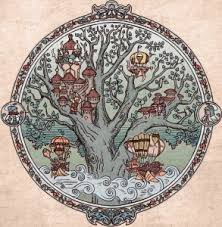 |
| The world of the Tree; art by Frank Victoria |
To give you an idea of the story itself, the societies of Tymon's Flight (and its sequels, Samiha's Song and Oracle's Fire) are dominated by a reactionary religious hierarchy that adheres to a Natural Order and (ostensibly) shuns science and technology, except within very narrow parameters. For example, the dirigibles must be wind-driven, rather than utilizing steam-driven propellors. And although the Central Canopy is still green and flourishing, the Eastern Canopy is blighted and its people correspondingly impoverished. The Argosian society in which Tymon grows up attributes the blight to heresy, and it is only when he is sent to a religious order within the Eastern Canopy that he begins to learn that the world of the Tree is wider, and its issues more complex, than he has previously imagined.
If you're a fan of Fantasy worldbuilding, then the Tree of Tymon's Flight will repay your reading. If you enjoy coming-of-age stories with adventure and dirigibles, intrigue and rebellion, and the fate of a world at stake, then I suspect you will find much more to enjoy within the leaves of both book and Tree.
---
March: A Wizard of Earthsea by Ursula Le Guin
April: Sparrow Hill Road by Seanan McGuire
May: Palimpsest by Catherynne M Valente
June: Ship of Magic & the Liveship Traders series by Robin Hobb
Previous Months:
February: The Lion, the Witch & the Wardrobe by CS LewisMarch: A Wizard of Earthsea by Ursula Le Guin
April: Sparrow Hill Road by Seanan McGuire
May: Palimpsest by Catherynne M Valente
June: Ship of Magic & the Liveship Traders series by Robin Hobb
July: Gideon the Ninth by Tamsyn Muir
---
---
Helen Lowe's first novel, Thornspell (Knopf), was published to critical praise in 2008. The second,The Heir of Night (The Wall Of Night Series, Book One) won the Gemmell Morningstar Award 2012, and the sequel, The Gathering Of The Lost, was shortlisted for the Gemmell Legend Award in 2013. Daughter Of Blood
(Book Three), was published in 2016 and Helen is currently completing
the final novel in the series. She posts regularly on her “…on Anything, Really” blog, monthly on the Supernatural Underground, and tweets @helenl0we



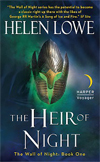
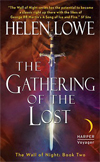
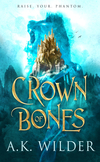
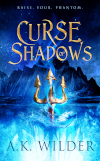
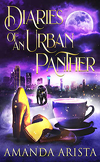
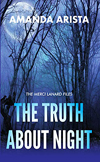

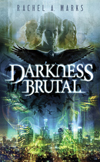
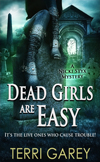
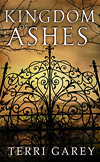
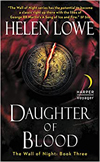
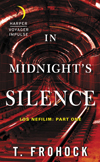

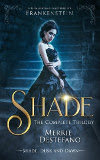

No comments:
Post a Comment